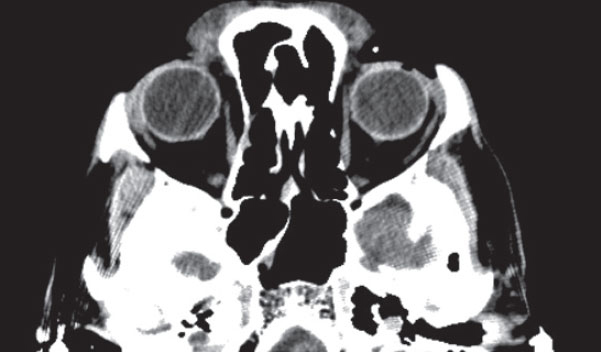 |
|
CT scans can help predict visual outcomes among traumatic eye injury patients. Photo: Jason Fliegel, OD. Click image to enlarge. |
A recent study, which evaluated the predictive value of computed tomography (CT) scan findings for poor visual outcomes among patients with traumatic eye injuries, suggests that this tool can help you estimate outcomes for such patients.
This retrospective survey reviewed documents from 200 patients with traumatic eye injury who underwent a diagnostic orbital CT scan. A number of diagnostic factors for eye injury in CT scans were investigated. The study authors calculated the predictive value of CT scan findings for poor visual outcome via sensitivity, specificity, accuracy, predictive values, hazard ratios and a binary logistic regression model.
Data showed that CT scan findings in these patients have high positive but limited negative predictive value, according to the researchers. Among the factors investigated, the most important that were able to independently predict poor visual outcomes included disorganized/collapsed globe and optic canal/nerve injury in orbital CT scan.
The study authors reported that increased/decreased anterior chamber size, hemorrhage in the anterior/posterior chamber, globe border haziness and orbital foreign body were also statistically significant predictive factors.
“The use of these factors for the prediction of visual outcomes in clinical practice should be done with other achievable clinical and physical exam findings and caution regarding the limitations associated with the quality of CT scan machines, the correct applied protocols and the experience of the interpreter,” the study authors concluded in their recent Journal of Ophthalmology paper.
Ren P, Jiao Y, Zhang C, et al. The predictive value of computed tomography findings for poor visual outcome in traumatic eye injury. J Ophthalmol. September 1, 2022. [Epub ahead of print]. |

